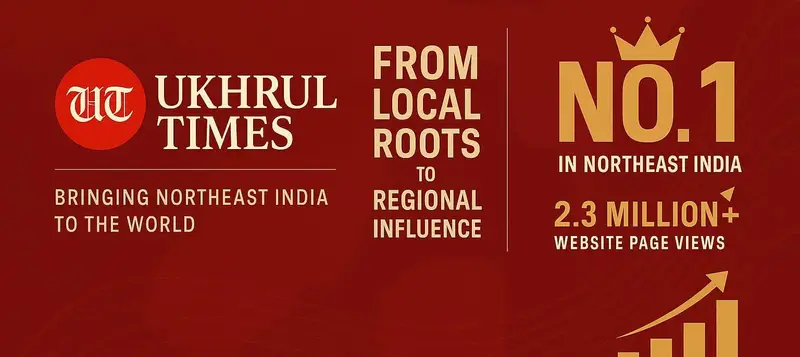Now Reading: Inpui Naga Union Condemns Prof Meijinlung on Inpui Tribe History
-
01
Inpui Naga Union Condemns Prof Meijinlung on Inpui Tribe History
Inpui Naga Union Condemns Prof Meijinlung on Inpui Tribe History

Ukhrul, Mar 5: The Inpui Naga Union has condemned Prof. Meijinlung for making an ‘outrageous claim’ at the centenary celebration of the Zeliangrong Union at Sangaiprou village that the Inpui tribe has no history and was formed during King Gambhir Singh’s reign by converting from the Rongmei tribe. He alleged that when Gambhir Singh’s officers visited Kabui Khullen in consecutive years for tax collection, they found that the villagers had completely changed their dialect within a year by borrowing words from the Chiru, Nambatsi, and Kom tribes. Based on this, he argued that the Inpui were named “Kabui Anouba” by Gambhir Singh’s people and are only about 200 years old.
Strongly rejecting “this false narrative”, the Inpui Naga Union termed it an insult to the Inpui tribe and also a fabrication meant to diminish their identity and to exclude them from the larger Hamei (Inpui, Zeme, Liangmei and Rongmei) community. The union also stated that the Inpui community has no history of living closely with the Chiru, Nambatsi and Kom tribes in a way that would have influenced the formation of their language. It also expressed deep disappointment with the Zeliangrong Union leaders who repeatedly urged them to participate in the celebration, only to subject them to public humiliation. In hindsight, they regretted their naivety in accepting their invitation.
Must read | Ex-Ukhrul DM Zuringla Kengoo Wins E-Governance Award for Transformative Project
Setting the record straight, the union stated that the Inpui have a rich history like the Zeliangrong. “Our progenitor, Nguiba, lived at Makuilongdi and had three brothers: Sagi, Aniuwang, and Chatiu. Sagi’s descendants became the Thangal tribe, and Aniuwang’s became the Maram tribe. Nguiba had three sons: Namgang (ancestor of the Zeme), Kading (Liangmei), and Rembang (Rongmei). Their uncle, Chatiu, the youngest brother of Nguiba, migrated to Koubru in search of his lost Mithun. Because Mithun was called “Kabui” in their dialect, they were named Kabuimei (Kabut). Today, these six tribes-Thangal, Maram, Zeme, Liangmei, Rongmei, and Kabui (Inpui) are distinct and independent entities.”
Prof. Meijinlung falsely equates Kabui with Rongmei, but the two are separate tribes with different origins. Even the Rongmei of Tamenglong do not consider themselves Kabui. Neither Rongmei legends nor Meitei historical records mention any Meitei involvement in their past. The Rongmei only came into contact with the Meiteis after returning from the Lushai Hills following their expulsion by the Lushais and Paites. On the other hand, the Kabui (Inpui) lived alongside the Meitei Mangang clan in the Koubru hills and shared matrimonial ties with them, Inpui Naga Union said.
Also read | Galo Tribe of Arunachal Pradesh
Further, it stated that many Inpui migrated from Koubrumany Inpui to Kajinglong and later settled with the Rongmei, eventually moving together to Mizoram. During their time in the Lushai Hills, the Inpui adopted some Lushai words into their dialect. Over time, the Rongmei, for phonetic convenience, changed “Kabuimei” to “Kapumei,” then “Puimei, ” and eventually prefixed “In” to create “Inpuimei.” However, when the Rongmei of Imphal Valley usurped the Kabui name, the Inpui, left without a clear identity, adapted their name by shortening “Inpuimei” to “Inpui.”
“The confusion between Kabui and Rongmei arose because the Meiteis did not distinguish between the two in their historical records. Consequently, the Rongmei fear that if they let go of the Kabui name, they will lose their historical presence in Manipur’s records. Even today, many Meiteis collectively refer to the Inpui, Zeme, Liangmei, and Rongmei as Kabui, reinforcing this historical misunderstanding,” Inpui Naga Union stated.
Despite such misrepresentation, the Inpui Union stated that it remains one of the indigenous tribes of Manipur, with deep historical roots and strong ties to the Meiteis. It also highlighted that the legendary Kabui Salang Maiba, who played a crucial role in the Khamba-Thoibi epic of the 12th century, belonged to the Inpui tribe citing historians Gangmumei Kamei and Marulung Remmei’s books “A History of the Zeliangrong Nagas” and “Zeliangrongi Wari Singbul” respectively. Furthermore, Shri Tepipa from Khongakhul (Inkam), an Inpui village, was among the Maichou Tariat who protected Manipur’s religion and culture during the King Garibniwaz`s rule (1709-1751), it said.
Also read | Norwegian DJ and Producer Alan Walker to Perform in Guwahati on April 17
















